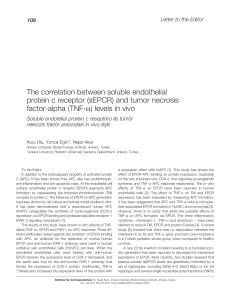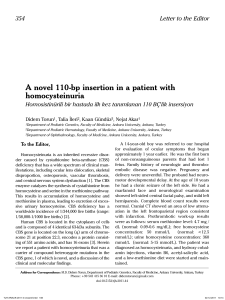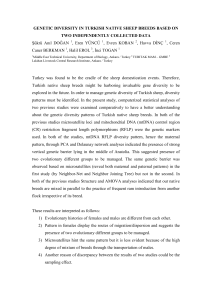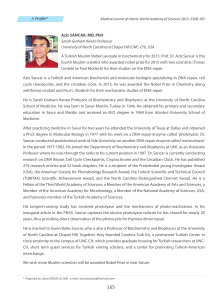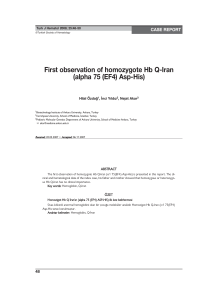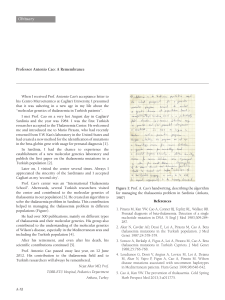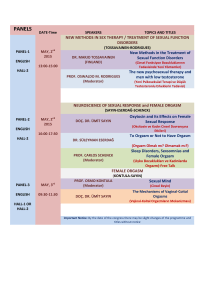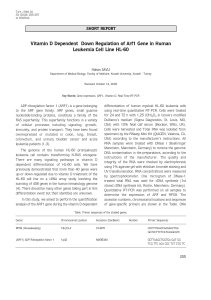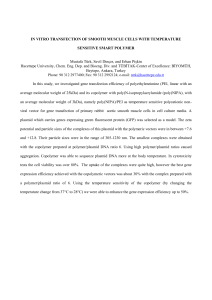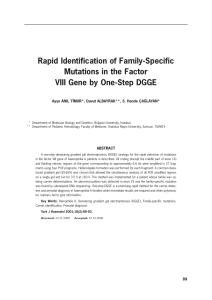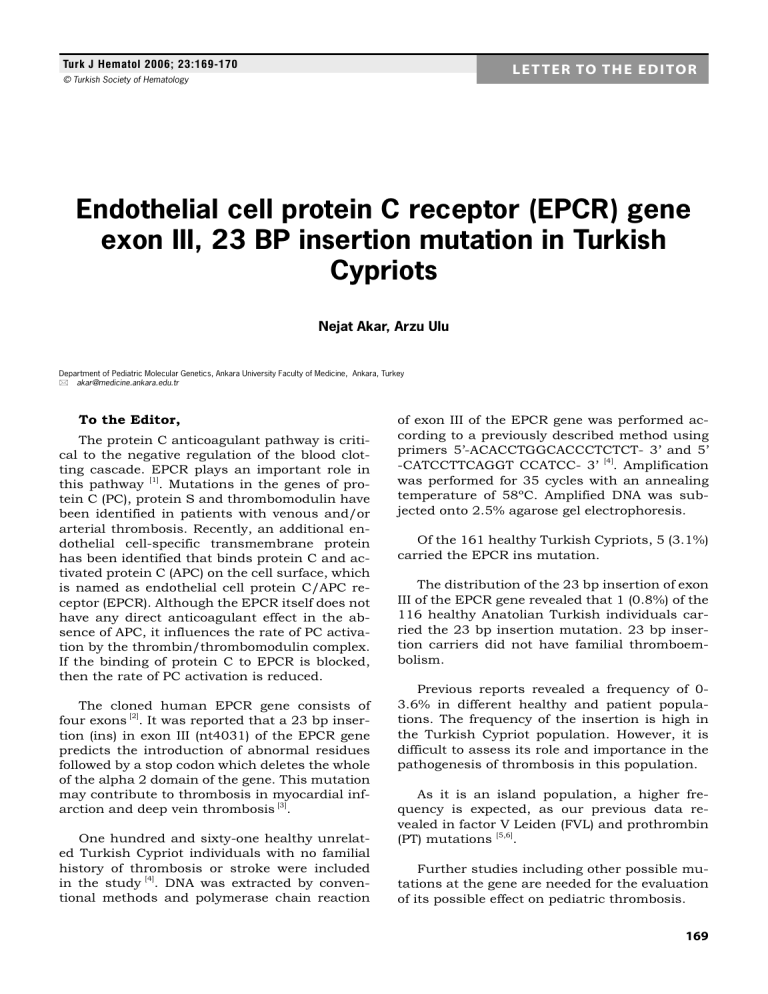
Turk J Hematol 2006; 23:169-170
L E T T E RRETO
H EARTI
E D I TO
V I ET W
CL R
E
© Turkish Society of Hematology
Endothelial cell protein C receptor (EPCR) gene
exon III, 23 BP insertion mutation in Turkish
Cypriots
Nejat Akar, Arzu Ulu
Department of Pediatric Molecular Genetics, Ankara University Faculty of Medicine, Ankara, Turkey
[email protected]
To the Editor,
The protein C anticoagulant pathway is critical to the negative regulation of the blood clotting cascade. EPCR plays an important role in
[1]
this pathway . Mutations in the genes of protein C (PC), protein S and thrombomodulin have
been identified in patients with venous and/or
arterial thrombosis. Recently, an additional endothelial cell-specific transmembrane protein
has been identified that binds protein C and activated protein C (APC) on the cell surface, which
is named as endothelial cell protein C/APC receptor (EPCR). Although the EPCR itself does not
have any direct anticoagulant effect in the absence of APC, it influences the rate of PC activation by the thrombin/thrombomodulin complex.
If the binding of protein C to EPCR is blocked,
then the rate of PC activation is reduced.
The cloned human EPCR gene consists of
[2]
four exons . It was reported that a 23 bp insertion (ins) in exon III (nt4031) of the EPCR gene
predicts the introduction of abnormal residues
followed by a stop codon which deletes the whole
of the alpha 2 domain of the gene. This mutation
may contribute to thrombosis in myocardial inf[3]
arction and deep vein thrombosis .
One hundred and sixty-one healthy unrelated Turkish Cypriot individuals with no familial
history of thrombosis or stroke were included
[4]
in the study . DNA was extracted by conventional methods and polymerase chain reaction
of exon III of the EPCR gene was performed according to a previously described method using
primers 5’-ACACCTGGCACCCTCTCT- 3’ and 5’
[4]
-CATCCTTCAGGT CCATCC- 3’ . Amplification
was performed for 35 cycles with an annealing
temperature of 58ºC. Amplified DNA was subjected onto 2.5% agarose gel electrophoresis.
Of the 161 healthy Turkish Cypriots, 5 (3.1%)
carried the EPCR ins mutation.
The distribution of the 23 bp insertion of exon
III of the EPCR gene revealed that 1 (0.8%) of the
116 healthy Anatolian Turkish individuals carried the 23 bp insertion mutation. 23 bp insertion carriers did not have familial thromboembolism.
Previous reports revealed a frequency of 03.6% in different healthy and patient populations. The frequency of the insertion is high in
the Turkish Cypriot population. However, it is
difficult to assess its role and importance in the
pathogenesis of thrombosis in this population.
As it is an island population, a higher frequency is expected, as our previous data revealed in factor V Leiden (FVL) and prothrombin
[5,6]
.
(PT) mutations
Further studies including other possible mutations at the gene are needed for the evaluation
of its possible effect on pediatric thrombosis.
169
References
1. Esmon CT. The endothelial cell protein C receptor.
Thromb Haemost 2000;83:639-643.
2. Simmonds RE, Lane DA. Structural and functional
implications of the intron/exon organization of the
human endothelial cell protein C/activated protein C
receptor (EPCR) gene: comparison with the structure
of CD1/major histocompatibility complex α 1 and α
2 domains. Blood 1999;94:632-641.
3. Biguzzi E, Merati G, Liaw PC, Bucciarelli P, Oganesyan N, Qu D, Gu JM, Fetiveau R, Esmon CT, Manucci
PM, Faioni EM. A 23 bp insertion in the endothelial
protein C receptor (EPCR) gene impairs EPCR function. Thromb Haemost 2001;86:945-948.
4. Akar N, Akar E, Gökdemir R, Özel D. Endothelial cell
protein C receptor (EPCR) gene exon III, 23 bp insertion mutation in the Turkish pediatric thrombotic
patients. Thromb Haemost 2002;88:1068-1069.
170
5. Akar N, Akar E, Dalgın G, Ömürlü K, Sözüöz A, Cin
Ş. Frequency of Factor V 1691 G-A in Turkish population. Thromb Haemost 1997;78:1527.
6. Akar N, Misirlioglu M, Akar E, Avcu F, Yalcin A, Sozuoz A. Prothrombin gene 20210 G-A mutation in the
Turkish population. Am J Hematol 1998;58:249.
Turkish Journal of Hematology

